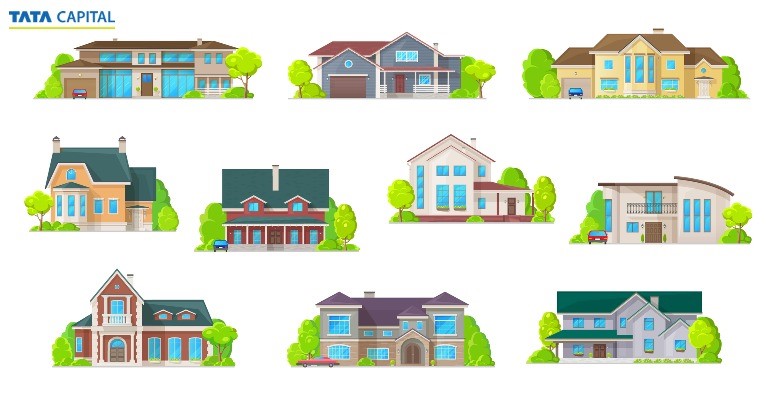Tata Capital > Blog > Loan for Home > Difference between Freehold and Leasehold Property in India
Let’s face it, homeownership is a challenging journey. There are dozens of factors to keep in mind, like budget, location, and property type. And right as you are juggling these already complicated aspects of, you stumble upon two words: “freehold” and “leasehold.”
While they may seem confusing at first, the terms freehold and leasehold tell you if you own a property and to what extent. Understanding them helps you decide what type of home ownership works best for you.
In this article, we’ll break down the key differences between freehold and leasehold property in India, so that you are equipped with the information to make the right choice for your homeownership.
Freehold property means that you have complete ownership of the land and property. A freehold property owner enjoys full control over his/her land and any buildings built upon it.
Freehold land agreements are not subject to any time duration. The owner enjoys easier access to home loans, simpler paperwork, and complete right to sell, transfer, or modify the property.
Leasehold property is where a lessor or tenant rents the property from its owner for a pre-determined amount of time. The leaseholder can own the building but not the land it is built upon.
Leaseholders are bound by the terms of the lease agreement and do not enjoy complete control over the property.
In India, flats and apartments are considered leasehold properties, as while you may own your apartment, the land that the building stands on is a leasehold property. The lease duration on a leasehold property can extend anywhere from 30 years to 999 years.
Freehold property comes with several lucrative benefits. These benefits include:
However, freehold property has its disadvantages:
There are several benefits to purchasing leasehold property. These benefits include:
The downsides of leasehold property are as follows:
Understanding the difference between freehold and leasehold properties ensures that you make the right decision for yourself and your family. Here are some key distinctions you should know about:
| Criteria | Freehold Property | Leasehold property |
| Time duration | No time duration | Can range from 30 to 999 years |
| Control over property | Complete control over land and buildings on it | Restricted control as defined in the lease agreement |
| Value over time | Increases with time | Decreases with time |
| Maintenance | Full Responsibility | Partial or no responsibility |
| Financial obligations | Maintenance costs | Charges owed to the landowner such as ground rent and service charges |
| Purchase costs | Relatively higher | Relatively lower |
While deciding on which type of ownership is right for you, keep the following points in mind:
Here are the steps to converting your leasehold property into freehold property:
Educating yourself on the differences between freehold and leasehold properties in India is crucial to ensuring that you make the best choice for yourself.
Tata Capital’s housing finance services can offer an additional boost to your homebuying endeavours by offering house loans at attractive interest rates.
Ensure a smooth homeowner journey by using Tata Capital’s accurate and easy-to-use tools to calculate your home loan eligibility.



Home Loan Balance Transfer – Benefits and Factors to Consider

Difference Between Home Extension Loan And Home Loan Extension


Everything You Need To Know About Processing Fees For Home Loan

What is the difference between a Villa, Bungalow, and Duplex apartment?

Pros and Cons: Higher Floor vs Lower Floor living – Which is better?

